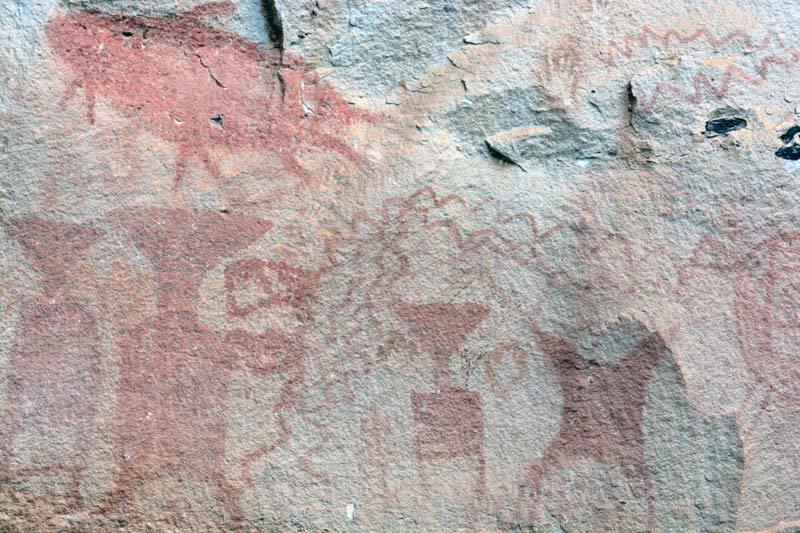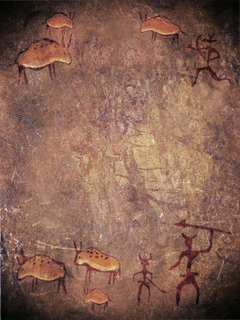Caveman Art the prehistoric stuff
A Journey into the Enigmatic World of Cave Art
Do you recall the history lessons on cave art from your school days? I certainly do. While most of the details may have faded from memory, specific images still linger in my mind. Among them, the bison stands out vividly, as it became the subject of my interpretation in art class when we explored caveman art.
So, what do we truly know about cave art? The earliest known European cave paintings date back a staggering 32,000 years. Yet, the true purpose behind these Paleolithic creations remains shrouded in mystery. Scientists, philosophers, and art historians have proposed numerous theories, each offering a glimpse into the possible intentions of our ancient ancestors. Admittedly, I, too, have entertained my own hypotheses, though I must admit they are likely far from accurate. After all, reality dictates that these early artists likely lacked the luxury of pondering dreamily and philosophically about life as they painted. However, who can truly say for certain?

The evidence at hand suggests that these paintings were not mere decorations adorning living spaces, as we often do today. This conclusion is drawn from the fact that the caves housing these masterpieces do not exhibit signs of continuous habitation. Additionally, these cave paintings are often found in secluded and less accessible areas of the caves. Some theories propose that these artworks served as a means of communication or record-keeping, while others suggest a religious or ceremonial significance. Nevertheless, I still find myself partial to the whimsical notion of imaginative cave-dwellers retreating to their hidden sanctuaries, away from the demands of daily life, and fervently doodling to their hearts' content.
It is worth noting that nearly 350 caves in France and Spain alone have been discovered to contain prehistoric art. Determining the age of these paintings has been a topic of much debate and contention. Methods such as radiocarbon dating can be easily misled by contaminated samples of older or newer material, especially considering that the caves and rocky overhangs have accumulated debris from various time periods. However, recent advancements in scientific techniques have made it possible to date the paintings themselves by analysing the pigments used. I wonder, though, if such methods are invasive and potentially damaging to the delicate drawings. I'm sure an expert could shed more light on this matter. Moreover, the subject matter depicted in the art can provide valuable clues regarding their age. For instance, the presence of reindeer in the Spanish cave known as "Cueva de las Monedas" suggests that the artwork was created during the last Ice Age.
Among the vast array of cave art, the Chauvet Cave holds the distinction of being the oldest known cave, with paintings that may be around 32,000 years old according to radiocarbon dating. Some researchers question this age, as they believe the level of artistic sophistication displayed in these drawings surpasses what was thought possible during that era. Regardless, these ancient creations continue to captivate us as the earliest known form of art, providing a glimpse into the minds and experiences of our distant ancestors.
When examining the themes commonly depicted in cave paintings, we find a prevalence of large wild animals such as bison, horses, and deer. Tracings of human hands and abstract patterns known as finger flutings also grace the cave walls. Interestingly, realistic depictions of the human form are rare, with most human representations appearing schematic rather than naturalistic. It is believed that a powerful religious taboo forbade the realistic portrayal of human figures. The paintings themselves were often created using red and yellow ochre, hematite, manganese oxide, and charcoal—pigments that continue to serve as the foundation for paint even to this day. I'm sure many artists among you would recognise these familiar names.
As we delve into the enigmatic world of cave art, we find ourselves marveling at the boundless creativity and ingenuity of our ancient ancestors. These captivating images offer a glimpse into the depths of human expression and the rich tapestry of our shared history. So, let us cherish and appreciate the legacy of these primitive masterpieces, for they serve as a testament to the enduring power and universal language of art.
Have a look at these ‘Google image’ links for some images of well known cave paintings
